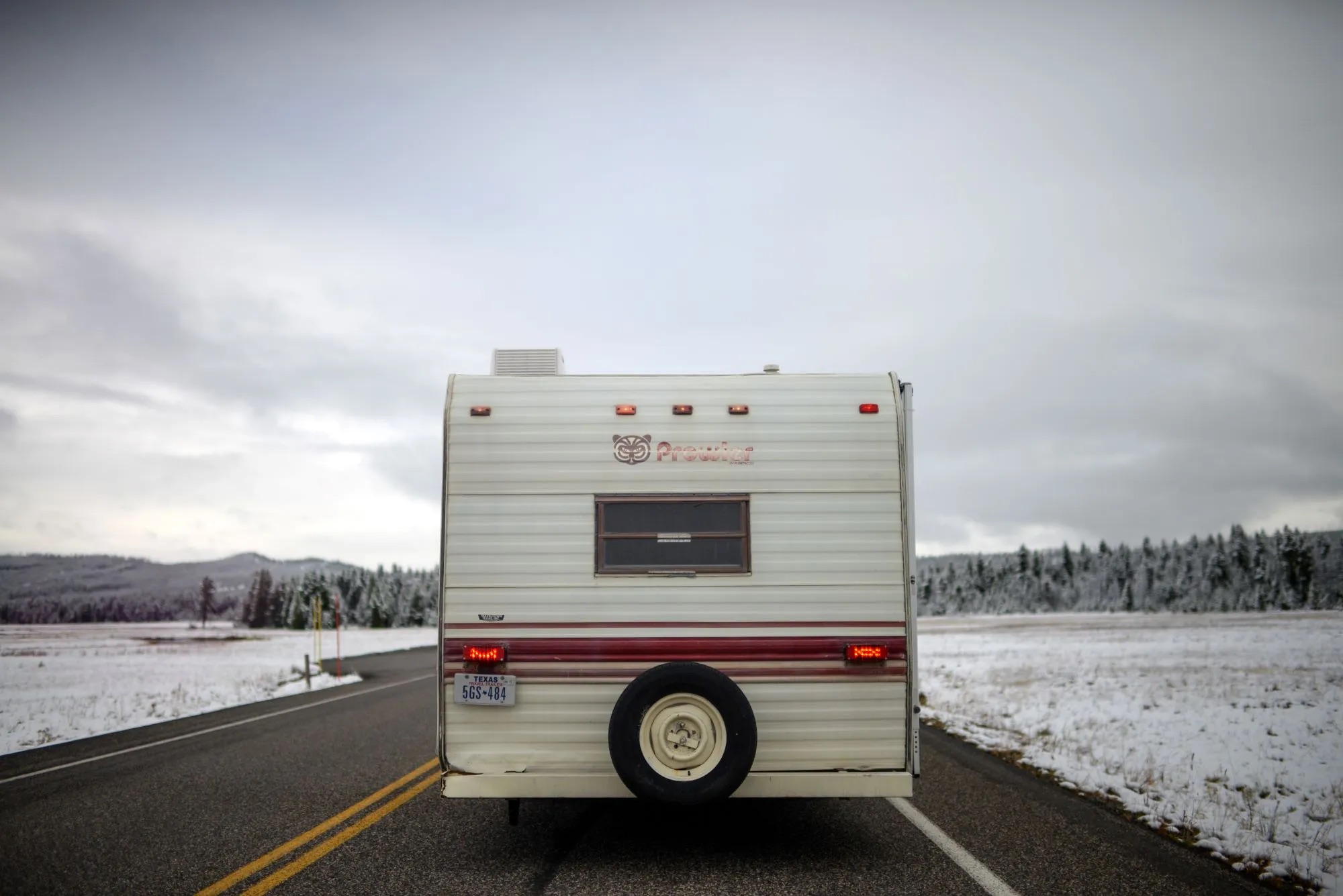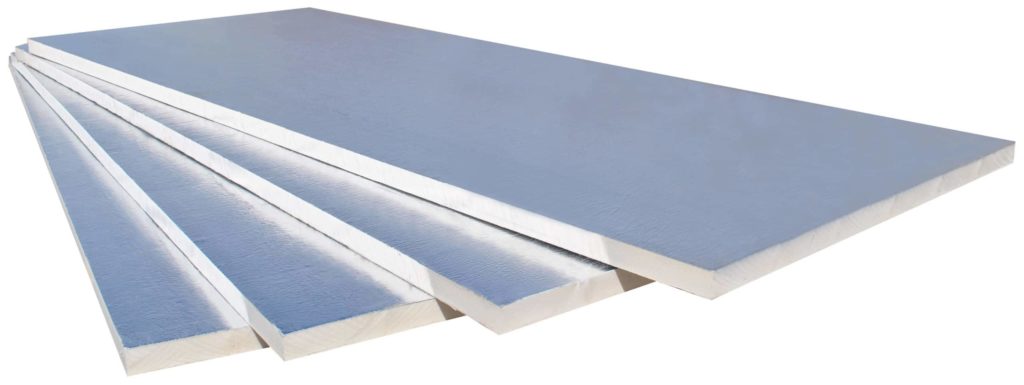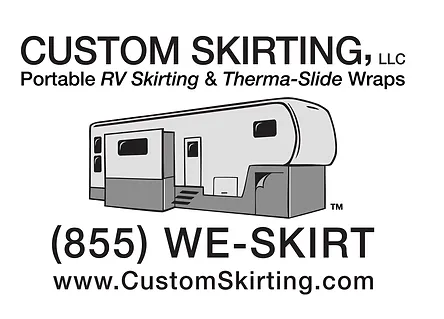
What To Know About Foam Board Insulation
Table of contents
- What is Foam Board Insulation?
- How Does Foam Board Insulation Work?
- What is R-Value?
- What is Foam Board Insulation Made Of?
- Best Foam Board Applications
- Why Choose Foam Board Insulation?
- Advantages of Foam Board Insulation for RV Skirting
- Disadvantages of Foam Board Insulation for RV Skirting
- Custom Skirting: Your Best Option for RV Skirting
Foam board insulation, often referred to as foam insulation board, has become a cornerstone in modern construction and insulation practices. Whether you’re considering it for your home or contemplating its innovative use in foam board RV skirting, understanding its nuances is crucial. In this comprehensive guide, we’ll delve into what foam board insulation is, how it works, the critical aspect of R-value, its composition, ideal applications, and why it’s a game-changer for RV skirting. We’ll also explore the advantages it brings to the table and when it’s time to consider a replacement.
What is Foam Board Insulation?
Foam board insulation emerges as a compelling alternative to the ubiquitous fiberglass batt insulation prevalent in most households. With a superior R-value per inch of thickness, resistance to moisture, and ease of handling, it stands out as a versatile choice for insulation needs.
DIY enthusiasts should acquaint themselves with various types of boards, each offering distinct advantages:
- Expanded Polystyrene (EPS):
Derived from the same material as disposable coffee cups, EPS boasts an R-value of 4 per inch of thickness, making it an economical option. Widely utilized beneath roofing, over foundation walls, and beneath siding, its affordability and versatility contribute to its popularity. - Extruded Polystyrene:
Recognizable by its rigid pink or blue panels, extruded polystyrene is available in various thicknesses at home centers. Denser than EPS, it provides a commendable R-value of 5 per inch of thickness. Options with straight or tongue-and-groove edges minimize air movement, and its adaptability in size configurations caters to diverse applications. A common application includes its use in foundation insulation panels. - Polyiso (Polyisocyanurate):
Positioned as a denser and relatively more expensive foam board insulation, Polyiso offers an impressive R-value of 6 per inch of thickness. Often featuring a foil-faced surface for radiant heat reflection, it comes in multiple thicknesses. Its utilization extends to covering house sheathing beneath siding and finding effectiveness in attic spaces where its reflective properties shine.
In essence, the array of foam board insulation options provides a spectrum of choices for DIY projects, each tailored to specific requirements. Whether prioritizing cost-effectiveness with EPS, seeking versatility with extruded polystyrene, or opting for the reflective prowess of Polyiso, foam board insulation proves itself as a multifaceted solution for varied insulation needs.

How Does Foam Board Insulation Work?
The magic of foam board insulation lies in its ability to resist the transfer of heat. The rigid foam core acts as a barrier, slowing down the movement of heat through the material. This makes it an excellent choice for both cold and warm climates, maintaining a comfortable interior temperature by preventing the loss or gain of heat.
What is R-Value?
When evaluating foam board insulation, understanding its R-value is paramount. R-value measures the material’s thermal resistance—the higher the R-value, the greater the insulating effectiveness. Inboard insulation, a higher R-value ensures better resistance to heat flow, making it an energy-efficient choice for your home or RV.
What is Foam Board Insulation Made Of?
Foam board insulation relies on a variety of materials, with polystyrene, polyisocyanurate (polyiso), and polyurethane being the most prevalent.
Polystyrene, identified as a colorless, transparent thermoplastic by the U.S. DOE, manifests in different forms such as molded expanded polystyrene (EPS) and extruded polystyrene (XPS). While both EPS and XPS originate from polystyrene, their manufacturing processes differ. EPS is crafted from fused plastic beads, creating a cellular structure, whereas XPS begins as molten material, pressed into sheets during its formation.
Polyisocyanurate stands out as a thermosetting plastic, presenting a closed-cell foam infused with low-conductivity, hydrochlorofluorocarbon-free gas. Over time, polyisocyanurate may experience a reduction in R-Value as the low-conductivity gas escapes, gradually replaced by air.
Polyurethane, a versatile foam insulation, comes in both open-cell and closed-cell varieties. Additionally, when reflective foil faces an open-air space, it can double as a radiant barrier, enhancing the insulation’s overall performance.
Best Foam Board Applications
Foam board insulation finds its best applications in various scenarios. It excels in insulating walls, roofs, and floors. Its versatility extends to unique uses, such as foam board RV skirting, where its lightweight yet sturdy nature provides an effective barrier against external temperature fluctuations.

Why Choose Foam Board Insulation?
Foam board insulation emerges as a cornerstone in modern insulation practices. From homes to specialized applications like foam board RV skirting, this material proves its versatility with a combination of efficacy and ease of use.
The sixth point of significance lies in understanding why choosing board insulation is pivotal, especially in the context of RV skirting. Foam board insulation provides an extra layer of protection, playing a crucial role in regulating the interior temperature of RVs. This is particularly vital for individuals navigating diverse climates, where the insulation becomes a shield against the external elements, ensuring a comfortable and stable environment within the RV.
Beyond its application in RV skirting, foam insulation board stands out for its thermal resistance, creating a barrier that minimizes heat transfer. Whether it’s the lightweight yet sturdy expanded polystyrene (EPS) or the denser extruded polystyrene (XPS), foam board insulation offers a range of options to cater to specific insulation needs.
In essence, knowing about foam board insulation is delving into a world of effective temperature regulation and energy efficiency. Whether you’re insulating your home or considering its revolutionary use in foam board RV skirting, understanding its properties and advantages empowers you to make informed choices for a comfortable and efficient living space.
Advantages of Foam Board Insulation for RV Skirting
- Energy Efficiency: By preventing heat loss or gain, foam board RV skirting keeps your RV’s interior temperature stable, reducing the strain on your heating or cooling systems.
- Easy Installation: Insulation board RV skirting is easy to install, making it a practical choice for RV owners looking for a hassle-free insulation solution.
- Lightweight and Durable: The lightweight nature of the foam board makes it easy to handle during installation, and its durability ensures long-term effectiveness in protecting your RV.
- Cost-Effective: Foam insulation is a cost-effective solution for RV skirting, offering substantial benefits without breaking the bank.
Disadvantages of Foam Board Insulation for RV Skirting
- Attaching to RV: Your insulation and the total R-Value of your under belly is only as good as its weakest part. Therefore, having a good sealed off connection to your RV will optimize the overall performance of your energy efficiency. Unfortunately, creating a tight seal around the perimeter of of your RV usually requires the use of messy and damaging foam insulation or a high quality duct tape. This often results in paint damage and residue left on the outside of your RV.
- Not Allowed: Because of the unsightly nature and the mess foam board can create, many long term parks will not allow foam board for RV skirting.
- Bulky: Foam boards may be light, but they are not compact or easy to reuse when you have to pack up to move to your next site.
- Reuse: In addition to being bulky, like other rigid materials such as plywood and OSB, foam board does not not adjust to the differentiating ground topography that one encounters moving from site to site. Because of the this, foam board insulation will often need to be cut (or added to) to adjust to the ever changing topography making it less portable then other options.
- Physical Damage: Insulation boards can deteriorate due to physical damage such as moisture exposure, impact, or pest infestation. If the foam boards show signs of cracking, warping, or crumbling, it’s time for a replacement. Physical damage compromises the insulation’s effectiveness.
- Water Damage: Foam board insulation is vulnerable to moisture. If the insulation boards have been exposed to water, they can become moldy, lose their structural integrity, and even become a breeding ground for mold and mildew. Water-damaged foam boards must be promptly replaced to prevent further issues like structural damage and health hazards.
- R-Value Reduction: Over time, insulation materials can degrade, leading to a decrease in their R-value. R-value measures the insulation’s thermal resistance; a lower R-value means reduced insulating effectiveness. If the insulation is not providing the desired thermal resistance, it might be time to replace it with newer, higher-performing materials. That being said, your RV is still significantly in a better position with it then vs without it.
Custom Skirting: Your Best Option for RV Skirting
A specialized team dedicated to crafting custom RV skirting solutions that redefine protection and convenience. Our “No-Snap, No-Gap” channel system ensures a precise fit, sealing out water, and snow, and offering superior wind resistance.
Rigorously tested and improved over a decade, our skirting has endured harsh winters across the northern United States and Canada. Its user-friendly design that adjusts to the land, allows for quick set up and it’s easy to pack up for your next adventure. When you choose Custom Skirting, you’re choosing unrivaled quality, durability, and convenience for your RV.
